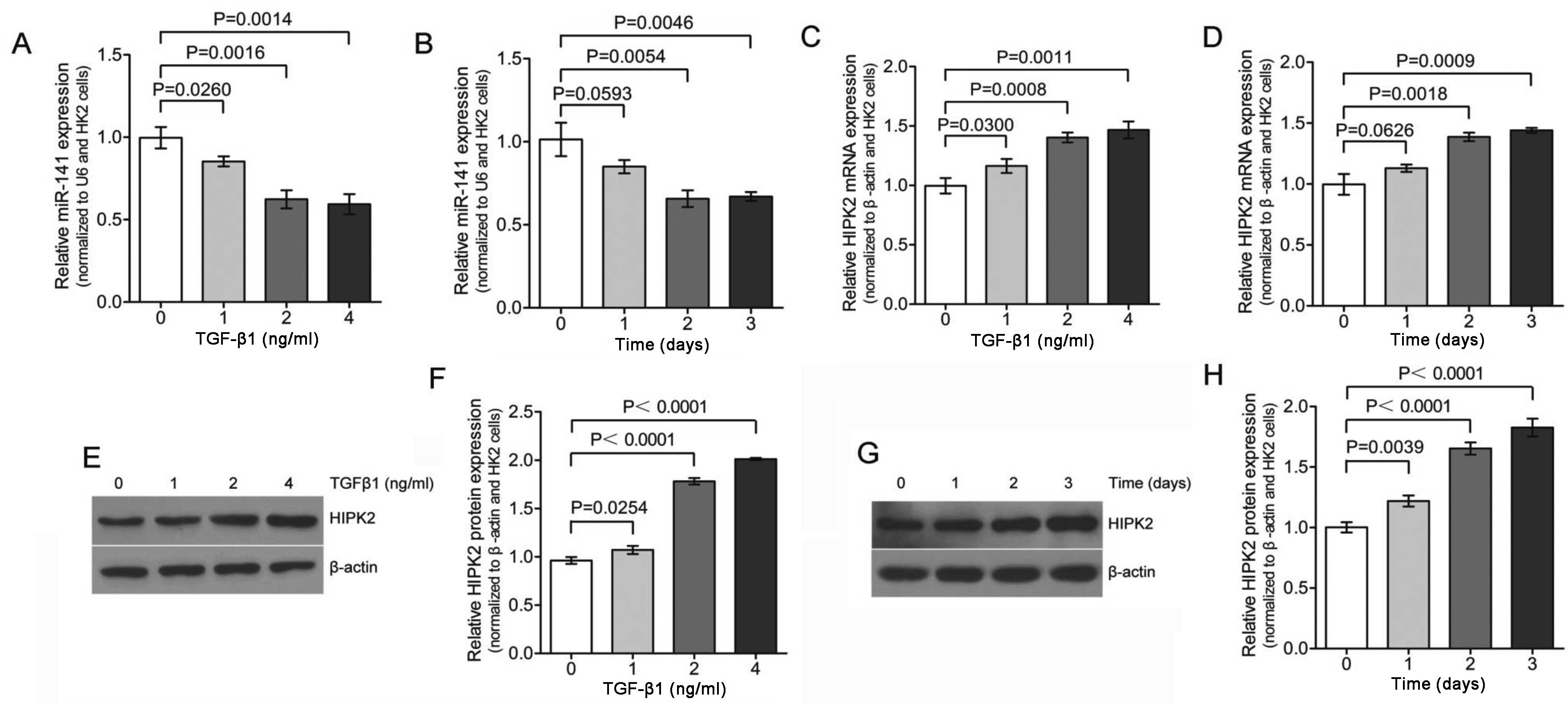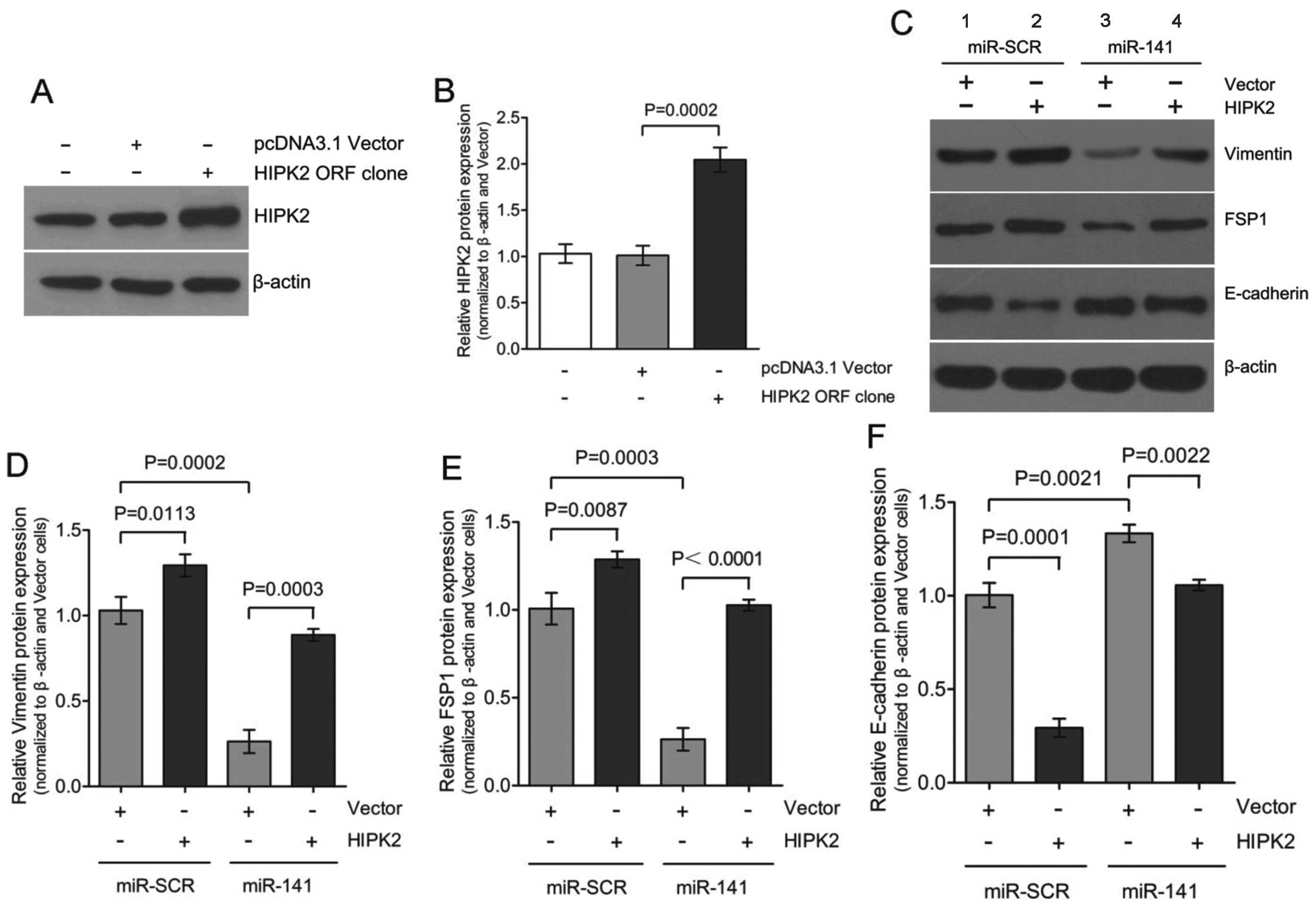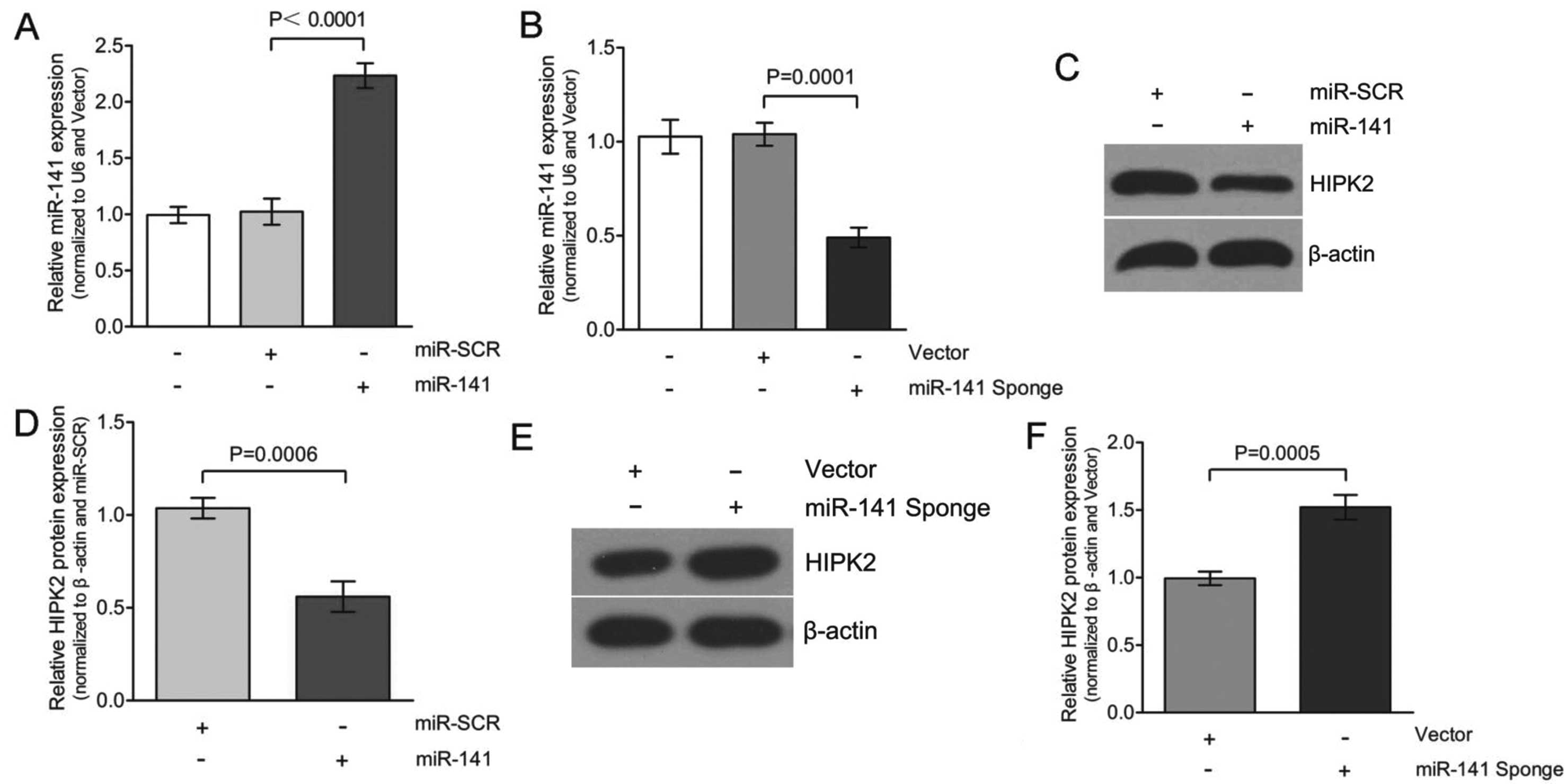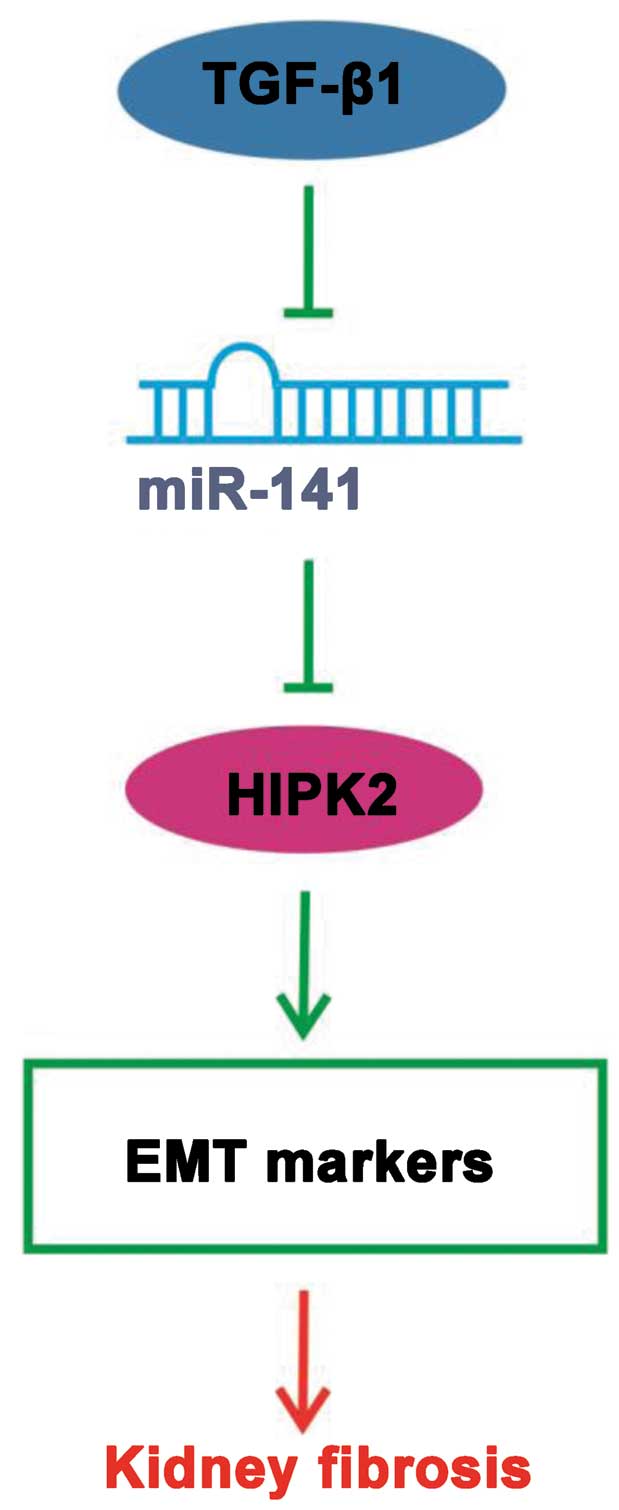|
1
|
Liu Y: Epithelial to mesenchymal
transition in renal fibrogenesis: pathologic significance,
molecular mechanism, and therapeutic intervention. J Am Soc
Nephrol. 15:1–12. 2004. View Article : Google Scholar
|
|
2
|
Zeisberg M and Kalluri R: The role of
epithelial-to-mesenchymal transition in renal fibrosis. J Mol Med
(Berl). 82:175–181. 2004. View Article : Google Scholar
|
|
3
|
Kalluri R and Weinberg RA: The basics of
epithelial-mesenchymal transition. J Clin Invest. 119:1420–1428.
2009. View Article : Google Scholar : PubMed/NCBI
|
|
4
|
Strutz F, Okada H, Lo CW, Danoff T, Carone
RL, Tomaszewski JE and Neilson EG: Identification and
characterization of a fibroblast marker: FSP1. J Cell Biol.
130:393–405. 1995. View Article : Google Scholar : PubMed/NCBI
|
|
5
|
Strutz F and Müller GA: Renal fibrosis and
the origin of the renal fibroblast. Nephrol Dial Transplant.
21:3368–3370. 2006. View Article : Google Scholar : PubMed/NCBI
|
|
6
|
Liu Y: New insights into
epithelial-mesenchymal transition in kidney fibrosis. J Am Soc
Nephrol. 21:212–222. 2010. View Article : Google Scholar
|
|
7
|
Li Y, Yang J, Luo JH, Dedhar S and Liu Y:
Tubular epithelial cell dedifferentiation is driven by the
helix-loop-helix transcriptional inhibitor id1. J Am Soc Nephrol.
18:449–460. 2007. View Article : Google Scholar : PubMed/NCBI
|
|
8
|
Tan R, Zhang J, Tan X, Zhang X, Yang J and
Liu Y: Downregulation of SnoN expression in obstructive nephropathy
is mediated by an enhanced ubiquitin-dependent degradation. J Am
Soc Nephrol. 17:2781–2791. 2006. View Article : Google Scholar : PubMed/NCBI
|
|
9
|
Yang J, Shultz RW, Mars WM, Wegner RE, Li
Y, Dai C, Nejak K and Liu Y: Disruption of tissue-type plasminogen
activator gene in mice reduces renal interstitial fibrosis in
obstructive nephropathy. J Clin Invest. 110:1525–1538. 2002.
View Article : Google Scholar : PubMed/NCBI
|
|
10
|
Yang J, Zhang X, Li Y and Liu Y:
Downregulation of smad transcriptional corepressors snon and ski in
the fibrotic kidney: an amplification mechanism for TGF-beta1
signaling. J Am Soc Nephrol. 14:3167–3177. 2003. View Article : Google Scholar : PubMed/NCBI
|
|
11
|
Lan HY: Diverse roles of TGF-beta/smads in
renal fibrosis and inflammation. Int J Biol Sci. 7:1056–1067. 2011.
View Article : Google Scholar
|
|
12
|
Meng XM, Chung AC and Lan HY: Role of the
TGF-beta/BMP-7/smad pathways in renal diseases. Clin Sci (Lond).
124:243–254. 2013. View Article : Google Scholar
|
|
13
|
Kalluri R and Neilson EG:
Epithelial-mesenchymal transition and its implications for
fibrosis. J Clin Invest. 112:1776–1784. 2003. View Article : Google Scholar : PubMed/NCBI
|
|
14
|
Branton MH and Kopp JB: TGF-beta and
fibrosis. Microbes Infect. 1:1349–1365. 1999. View Article : Google Scholar : PubMed/NCBI
|
|
15
|
Patel V and Noureddine L: MicroRNAs and
fibrosis. Curr Opin Nephrol Hypertens. 21:410–416. 2012. View Article : Google Scholar : PubMed/NCBI
|
|
16
|
Bartel DP: MicroRNAs: genomics,
biogenesis, mechanism, and function. Cell. 116:281–297. 2004.
View Article : Google Scholar : PubMed/NCBI
|
|
17
|
Wienholds E, Kloosterman WP, Miska E,
Alvarez-Saavedra E, Berezikov E, de Bruijn E, Horvitz HR, Kauppinen
S and Plasterk RH: MicroRNA expression in zebrafish embryonic
development. Science. 309:310–311. 2005. View Article : Google Scholar : PubMed/NCBI
|
|
18
|
Yi R, O’Carroll D, Pasolli HA, Zhang Z,
Dietrich FS, Tarakhovsky A and Fuchs E: Morphogenesis in skin is
governed by discrete sets of differentially expressed microRNAs.
Nat Genet. 38:356–362. 2006. View
Article : Google Scholar : PubMed/NCBI
|
|
19
|
Esquela-Kerscher A and Slack FJ: Oncomirs
- microRNAs with a role in cancer. Nat Rev. Cancer. 6:259–269.
2006.
|
|
20
|
Zarjou A, Yang S, Abraham E, Agarwal A and
Liu G: Identification of a microRNA signature in renal fibrosis:
role of miR-21. Am J Physiol Renal Physiol. 301:F793–F801. 2011.
View Article : Google Scholar : PubMed/NCBI
|
|
21
|
Xiong M, Jiang L, Zhou Y, Qiu W, Fang L,
Tan R, Wen P and Yang J: The miR-200 family regulates
TGF-beta1-induced renal tubular epithelial to mesenchymal
transition through smad pathway by targeting ZEB1 and ZEB2
expression. Am J Physiol Renal Physiol. 302:F369–F379. 2012.
View Article : Google Scholar
|
|
22
|
Wang B, Komers R, Carew R, Winbanks CE, Xu
B, Herman-Edelstein M, Koh P, Thomas M, Jandeleit-Dahm K,
Gregorevic P, Cooper ME and Kantharidis P: Suppression of
microRNA-29 expression by TGF-beta1 promotes collagen expression
and renal fibrosis. J Am Soc Nephrol. 23:252–265. 2012. View Article : Google Scholar :
|
|
23
|
Korpal M, Lee ES, Hu G and Kang Y: The
miR-200 family inhibits epithelial-mesenchymal transition and
cancer cell migration by direct targeting of E-cadherin
transcriptional repressors ZEB1 and ZEB2. J Biol Chem.
283:14910–14914. 2008. View Article : Google Scholar : PubMed/NCBI
|
|
24
|
Calzado MA, Renner F, Roscic A and Schmitz
ML: HIPK2: a versatile switchboard regulating the transcription
machinery and cell death. Cell Cycle. 6:139–143. 2007. View Article : Google Scholar : PubMed/NCBI
|
|
25
|
Lee W, rews BC, Faust M, Walldorf U and
Verheyen EM: Hipk is an essential protein that promotes notch
signal transduction in the drosophila eye by inhibition of the
global co-repressor groucho. Dev Biol. 325:263–272. 2009.
View Article : Google Scholar
|
|
26
|
Lee W, Swarup S, Chen J, Ishitani T and
Verheyen EM: Homeodomain-interacting protein kinases (Hipks)
promote Wnt/Wg signaling through stabilization of beta-catenin/Arm
and stimulation of target gene expression. Development.
136:241–251. 2009. View Article : Google Scholar
|
|
27
|
Zhang J, Pho V, Bonasera SJ, Holtzman J,
Tang AT, Hellmuth J, Tang S, Janak PH, Tecott LH and Huang EJ:
Essential function of HIPK2 in TGFbeta-dependent survival of
midbrain dopamine neurons. Nat Neurosci. 10:77–86. 2007. View Article : Google Scholar
|
|
28
|
D’Orazi G, Cecchinelli B, Bruno T, Manni
I, Higashimoto Y, Saito S, Gostissa M, Coen S, Marchetti A, Del Sal
G, Piaggio G, Fanciulli M, Appella E and Soddu S:
Homeodomain-interacting protein kinase-2 phosphorylates p53 at ser
46 and mediates apoptosis. Nat Cell Biol. 4:11–19. 2002. View Article : Google Scholar : PubMed/NCBI
|
|
29
|
Hofmann TG, Möller A, Sirma H, Zentgraf H,
Taya Y, Dröge W, Will H and Schmitz ML: Regulation of p53 activity
by its interaction with homeodomain-interacting protein kinase-2.
Nat Cell Biol. 4:1–10. 2002. View
Article : Google Scholar
|
|
30
|
Rinaldo C, Prodosmo A, Siepi F and Soddu
S: HIPK2: a multitalented partner for transcription factors in DNA
damage response and development. Biochem Cell Biol. 85:411–418.
2007. View Article : Google Scholar : PubMed/NCBI
|
|
31
|
Jin Y, Ratnam K, Chuang PY, Fan Y, Zhong
Y, Dai Y, Mazloom AR, Chen EY, D’Agati V, Xiong H, Ross MJ, Chen N,
Ma’ayan A and He JC: A systems approach identifies HIPK2 as a key
regulator of kidney fibrosis. Nat Med. 18:580–588. 2012. View Article : Google Scholar : PubMed/NCBI
|
|
32
|
Ricci A, Cherubini E, Ulivieri A, Lavra L,
Sciacchitano S, Scozzi D, Mancini R, Ciliberto G, Bartolazzi A,
Bruno P, Graziano P and Mariotta S: Homeodomain-interacting protein
kinase2 in human idiopathic pulmonary fibrosis. J Cell Physiol.
228:235–241. 2013. View Article : Google Scholar
|
|
33
|
Wang B, Koh P, Winbanks C, Coughlan MT,
McClelland A, Watson A, Jandeleit-Dahm K, Burns WC, Thomas MC,
Cooper ME and Kantharidis P: miR-200a prevents renal fibrogenesis
through repression of TGF-beta2 expression. Diabetes. 60:280–287.
2011. View Article : Google Scholar :
|
|
34
|
Tamagawa S, Beder LB, Hotomi M, Gunduz M,
Yata K, Grenman R and Yamanaka N: Role of miR-200c/mir-141 in the
regulation of epithelial-mesenchymal transition and migration in
head and neck squamous cell carcinoma. Int J Mol Med. 33:879–886.
2014.PubMed/NCBI
|
|
35
|
Wallace K, Burt AD and Wright MC: Liver
fibrosis. Biochem J. 411:1–18. 2008. View Article : Google Scholar : PubMed/NCBI
|
|
36
|
Wynn TA: Integrating mechanisms of
pulmonary fibrosis. J Exp Med. 208:1339–1350. 2011. View Article : Google Scholar : PubMed/NCBI
|
|
37
|
Yang J and Liu Y: Dissection of key events
in tubular epithelial to myofibroblast transition and its
implications in renal interstitial fibrosis. Am J Pathol.
159:1465–1475. 2001. View Article : Google Scholar : PubMed/NCBI
|
|
38
|
Gregory PA, Bert AG, Paterson EL, Barry
SC, Tsykin A, Farshid G, Vadas MA, Khew-Goodall Y and Goodall GJ:
The mir-200 family and miR-205 regulate epithelial to mesenchymal
transition by targeting ZEB1 and SIP1. Nat Cell Biol. 10:593–601.
2008. View Article : Google Scholar : PubMed/NCBI
|
|
39
|
Hill C, Flyvbjerg A, Gronbaek H, Petrik J,
Hill DJ, Thomas CR, Sheppard MC and Logan A: The renal expression
of transforming growth factor-beta isoforms and their receptors in
acute and chronic experimental diabetes in rats. Endocrinology.
141:1196–1208. 2000.PubMed/NCBI
|
|
40
|
Chalazonitis A, Tang AA, Shang Y, Pham TD,
Hsieh I, Setlik W, Gershon MD and Huang EJ: Homeodomain interacting
protein kinase 2 regulates postnatal development of enteric
dopaminergic neurons and glia via BMP signaling. J Neurosci.
31:13746–13757. 2011. View Article : Google Scholar : PubMed/NCBI
|
|
41
|
Harada J, Kokura K, Kanei-Ishii C, Nomura
T, Khan MM, Kim Y and Ishii S: Requirement of the co-repressor
homeodomain-interacting protein kinase 2 for ski-mediated
inhibition of bone morphogenetic protein-induced transcriptional
activation. J Biol Chem. 278:38998–39005. 2003. View Article : Google Scholar : PubMed/NCBI
|
|
42
|
Hofmann TG, Stollberg N, Schmit ML and
Will H: HIPK2 regulates transforming growth factor-beta-induced
c-jun NH (2)-terminal kinase activation and apoptosis in human
hepatoma cells. Cancer Res. 63:8271–8277. 2003.PubMed/NCBI
|
















